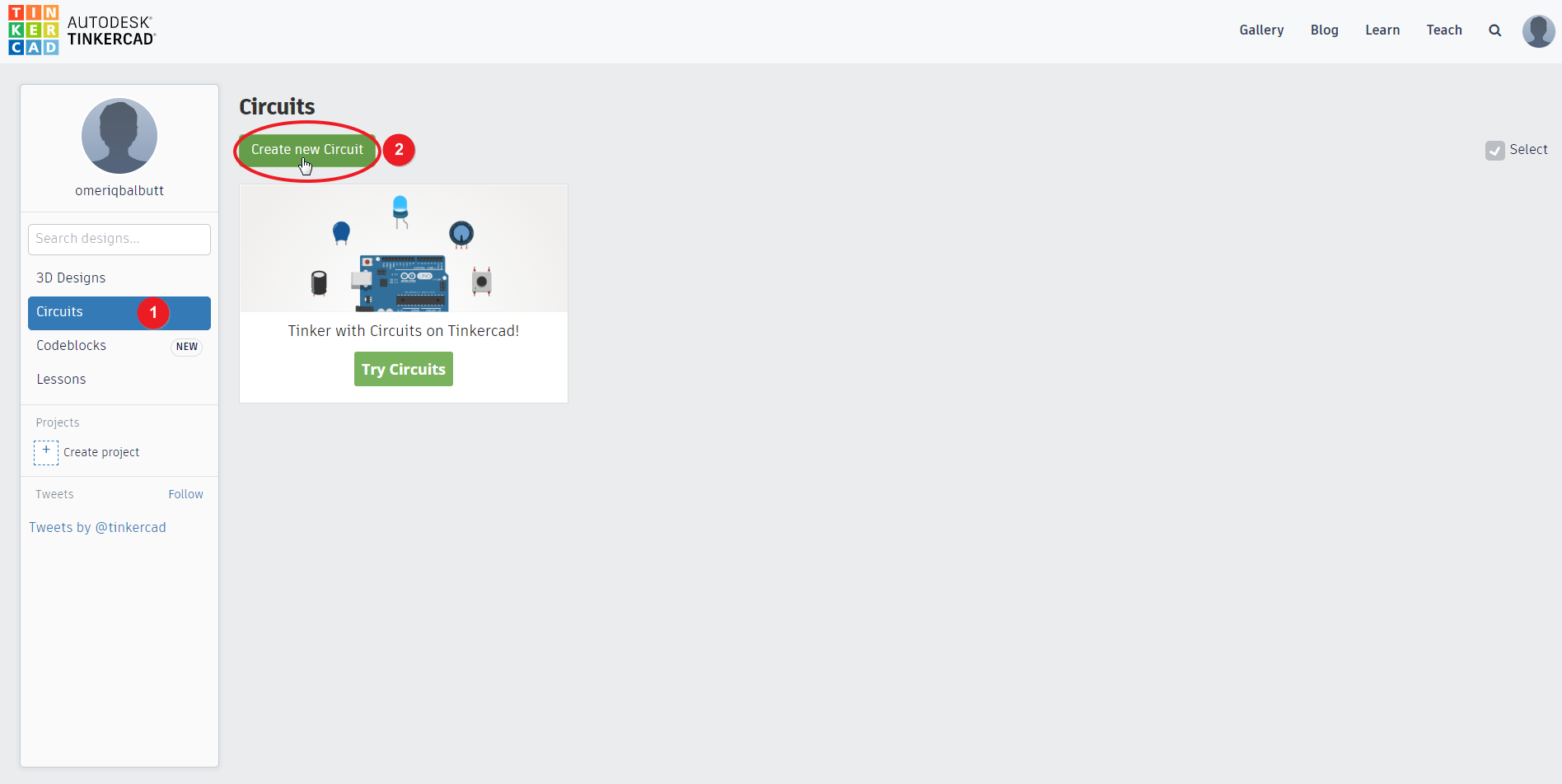

Connect a wire from j21 on the breadboard to UNO port 4. Lastly connect a wire from j20 on the breadboard to to UNO port 5. Connect a wire from j15 on the breadboard to UNO port 11. Connect a wire from j13 on the breadboard to UNO port 12. Next, wire from j3 to “+” and connect a wire from j5 to “-”. Connect a Breadboard wire from UNO 5V to the “+” pinhole adjacent to j1 and colour whatever you want. Connect a “Breadboard wire” from UNO GND to the “-” pinhole adjacent to j1 and whatever you want. If not, go back and make sure they are correctly placed and move to step 5. Line up the resistor's 1st terminal with H26 on the breadboard (rotate the resistor 90 degrees before doing so) At this point, take a look at image one to make sure you have the components lined up in the right place. Line up the Potentiometer's 3rd terminal with G3 on the breadboard 4. Do the same for the potentiometer but set its resistance to 10 and choose "k0hm". Click on the resistor and set the resistance of it to "330" and select the "Ω" symbol from the menu. Drag and drop a resistor and potentiometer to the work space. Line up the LCD's GND hole with F10 on the breadboard 2. You will first need to select components using the "+components" icon and drag and drop out: -16x2 LCD (1x) -A "Small breadboard" (1x) -An Arduino Uno (1x) -A resistor (1x) -A Potentiometer (1x) -Breadboard wires (Drag and drop them as you follow along) Steps 1. One of the most simple and fun designs you can start first is make an LCD circuit that displays anything you program it to.
#123d circuits arduino simulator series
Inside a DC motor is a series of copper coils and typically neodymium magnets as you can see in the last 2 images. These motors can be used to make something move in a project.

These displays come in many variations and sizes so you can easily find the right one for you.Ī DC Motor (Image 8): A DC motor (direct current motor) is a device that converts electrical pulses into mechanical movement.
#123d circuits arduino simulator code
You can code your arduino board to make the LCD display a message you want which is one of 3 projects we'll do later.

The LCD (Image 7): An LCD (Liquid Crystal Display) receives information and displays that information back to you so that you can know whether a circuit is working the way you'd like it to or not. An example of how this is used is you can connect it to an LED or DC motor and as you turn it the current gets higher or lower thus making the LED brighter or motor spin faster.

Potentiometer (Image 6): A potentiometer is a simple mechanical device that provides a varying amount of resistance as it is turned (lets more current through as it is turned). LEDs come in many colours and are the perfect solution for lighting up a project or just adding a bit of decoration. LED (Image 5): An LED (Light-emitting diode) emits light and brightness of the light can be changed depending on the amount of current flowing to it. The LED cannot handle the amount of electricity from the battery so you would put a resistor in between to limit the flow of current and prevent shorting of the LED. This is usually used when you have for example, an LED and a 9 volt battery. A Resistor (Image 4): The resistor limits the amount of electrical current that is flowing to your next component it's connected to. Breadboard Wires (Image 3): Breadboard wires (also called jumper cables) are used to transfer electricity through 2 points or components in your circuit. However, this can also be used to prototype a circuit without making it permanent and move you components to a real circuit board later on so that it is permanent. A Breadboard (Image 2): This is usually what you would use if you're trying to interconnect components together to make a functional circuit. By far the most commonly used Arduino would be the Arduino Uno in my opinion. There are also different types of Arduino boards from the orginal all the way to the Arduino Mega a or the Arduino Nano. An Arduino Board (Image 1): An Arduino is essentially the brains of your circuit and accepts various inputs of code to run a function or whatever you programmed it to do. Let's start with the more commonly used ones first. If you are new to Arduino it's important to understand what each component does so that you know what situation to use a certain component for what you want to accomplish.


 0 kommentar(er)
0 kommentar(er)
